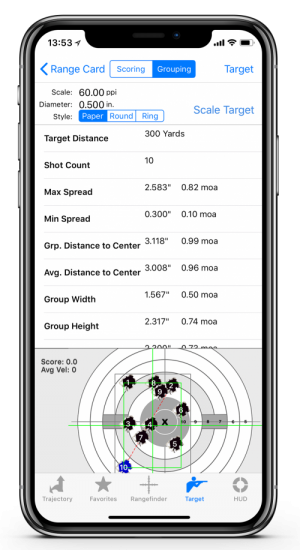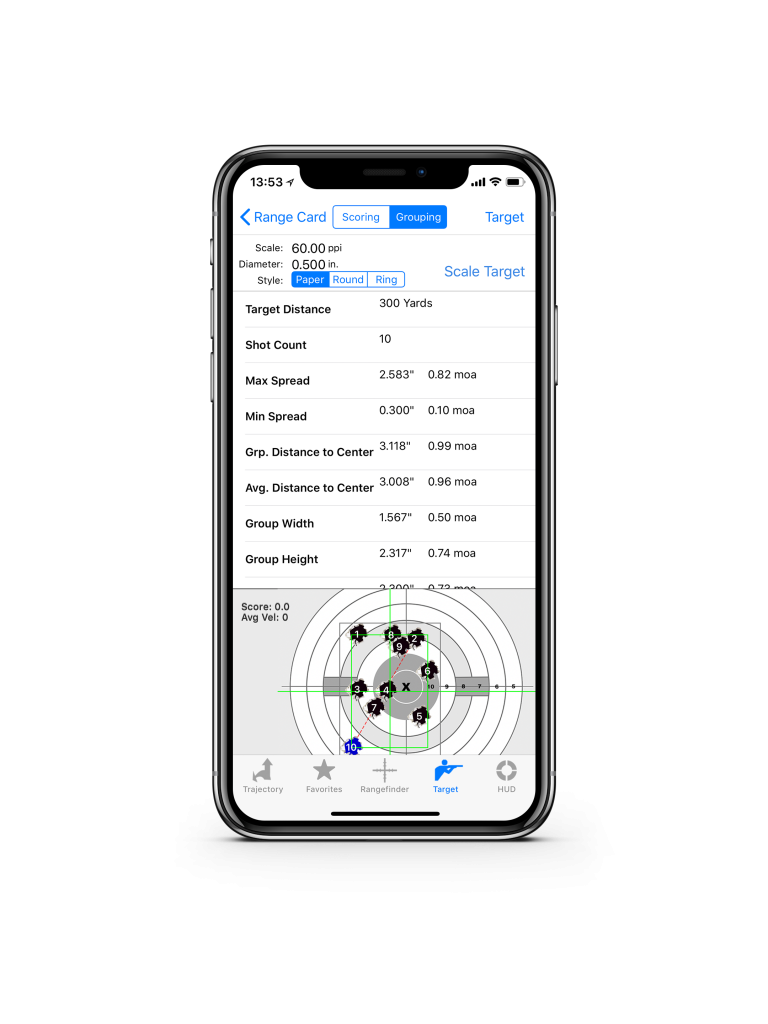Shooting Tip: Shoot Better Groups With Ballistic
April 3rd, 2019 by team

Rifle shooters of all kinds like to peg nice tight groups at the range. But there are some misunderstandings about those groups and what they mean for our long-range shooting.
Ballistic can be a huge help here, assisting us as we work to tighten up those groups and get us ready for long-range competition and hunting.
Let’s say you’re at the range with a new rifle or load and are shooting at 100 yards, after a 30-yard zeroing. First shot gets close to the bullseye, but the next one is four inches to the right. Then two shots strike way left, and the last one apparently didn’t even hit paper.
What the heck’s going on?
“There can be many reasons for those widely-space shots,” says Curt Vaughn, veteran long-distance shooting competitor and Head of Product for Ballistic. “One that is often overlooked is bullet weight versus barrel twist rate, also known as ‘Miller Stability.'”
As Vaughn explains, “To stabilize a heavy bullet, a rifle barrel needs a faster twist rate. A twist rate, of course, refers to the numbers of inches the rifling inside the barrel takes to make one complete revolution. So, for example, if your barrel has a 1:9 Twist, this means it takes nine inches for that rifling to make one revolution.”
If your bullets are hitting all over, plug the bullet’s weight and length, plus the twist rate of the barrel, into Ballistic. In your Ballistic Solution, “Miller Stability” is listed below the Zero Altitude data point.
“This is an assigned number that represents if the bullet will be stable or not,” says Vaughn. “That number will show up Red or Green, with Red for an unstable bullet and Green for a stable one. If your number is Red, your bullet weight and twist rate are not matching up, and your projectiles are never going to go where you want them to go.”
Refer to your ammunition manufacture’s twist-to-bullet-weight recommendation for loaded ammunition or your bullet makers recommendation for reloading.
Mechanical reasons will cause errant shots, too. A loose optics mount or loose scope rings are common culprits. A rifle barrel that is resting on a support can generate bad harmonics which will also throw off shots. And a very dirty barrel is no help, either!
Vaughn notes that while tight groups are obviously best, “You don’t need to shoot really tiny groups to shoot long range. If your rifle is shooting under an inch, you’ll hit a 12-inch gong easily at 1,000 yards.”
Ballistic can make your groups tighter, your practice time more efficient, and those long-distance hits very achievable.



Leave a Reply